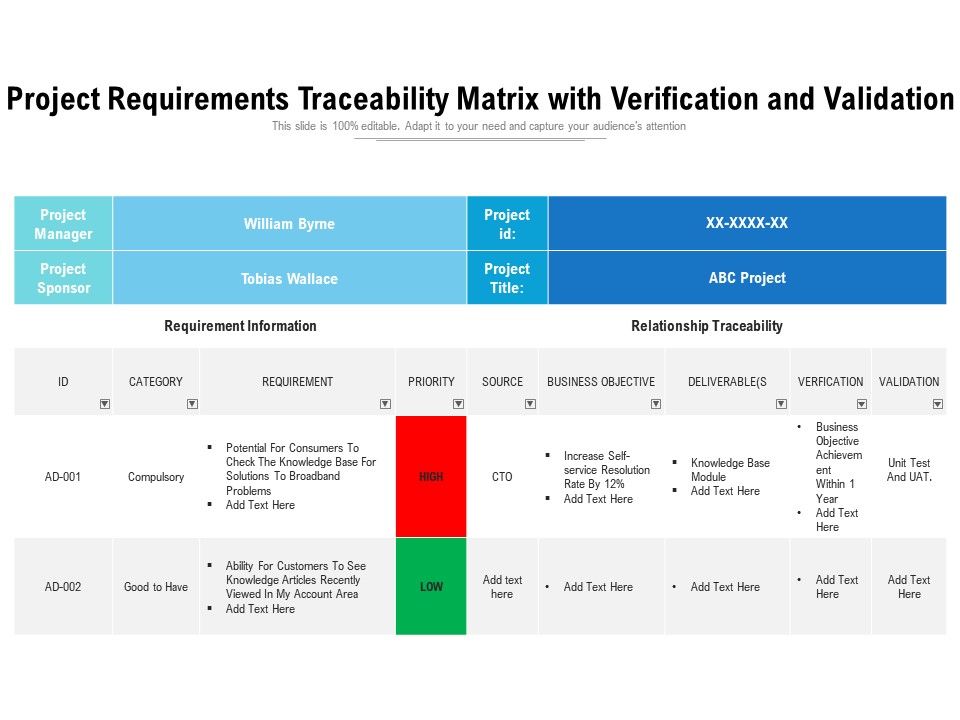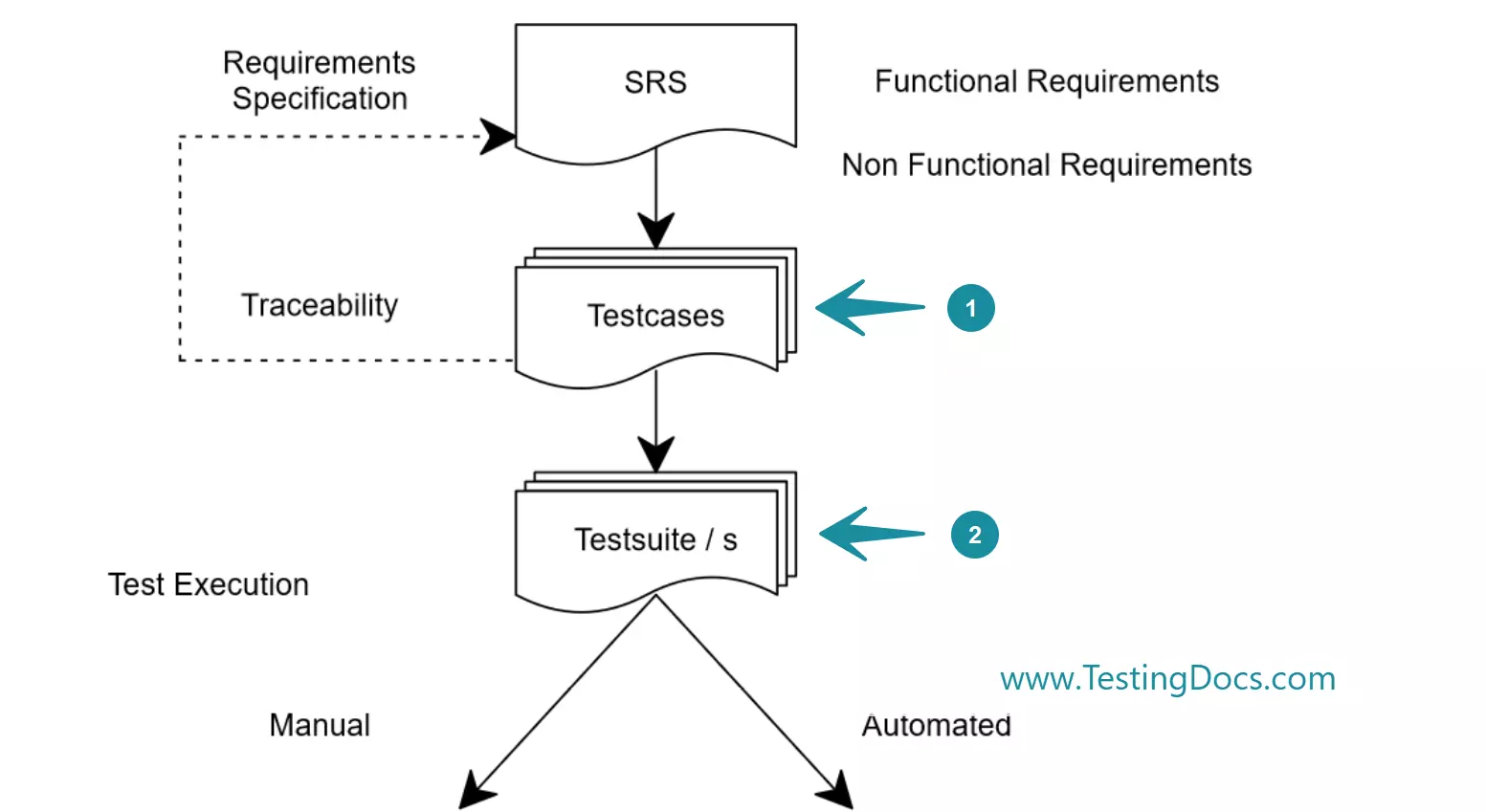

Besides, it further ensures that you are not going beyond the previously laid down requirements for the project.įor example, let’s assume you add a test case like “enter bank account details” to the previous email server example. The essence of this type of requirement traceability matrix is to prevent scope creep. The project is still on track if the test case relates to the initial requirement. Now, in the backward traceability matrix, you pick each consideration in the test case and trace it to the original requirement. For the test cases, you’ll have steps like: Here’s an example.įor example, let’s assume your current project requirement involves logging into an email server. Some high-level RTM models represent the requirements in the row and the test case in the column for this type of traceability matrix. The reverse or backward traceability matrix involves mapping the test cases back to the initial list of requirements.Įssentially, this matrix allows you to track a request back to its source. This RTM type is just the opposite of the forward traceability matrix. The forward traceability matrix helps you trace everything from the initial requirements to the test scenario and test cases to ensure that you’ve fully met the requirements. Check the result after invalid login data.In this scenario, you might have test cases such as: One of the test scenarios would be to check the login functionality. Here’s an example.įor example, let’s say one of the requirements is that the system must allow users to create an account using an email address and password.

With the forward traceability matrix, you’ll find the requirements in columns and the test case in rows. It confirms that every requirement is tested thoroughly. In this type of RTM, you’re tracing the requirements down to the final design to ensure it meets the initial request. This type of matrix is developed at the beginning of the project cycle to ensure the project progresses in the right direction. Forward Traceability Matrixįorward traceability involves mapping the requirements to test scenarios and, eventually, the test cases. To help you understand each, we’ll explain these types with relevant requirement traceability matrix examples. Generally, there are three types of RTM forward, reverse, and bidirectional traceability matrices. Thus, it becomes easier to avoid needless expenses or project delays related to an audit. Everyone has a clear picture of what is and what’s not to be done, making their workflow seamless.įinally, with the RTM in place, you can confidently show your compliance with regulations related to the project.
Requirements traceability matrix software#
The requirement traceability matrix doubles as a form of software documentation that helps keep your project team in sync. It also becomes easier to find the root cause of bugs since every test scenario and case is clearly listed. Moreover, RTM allows you to detect missing functionalities in your software product efficiently. With the requirements traceability matrix, you can be sure that your project meets every goal it set out to achieve. You’ll record this validation in an additional requirements traceability matrix status column, as shown below. Once the test cases validate individual scenarios as “met/pass,” you’ve fully met the requirement. You can then assign test cases to these scenarios to see if they are met individually. So, with an RTM, you can break it down into measurable test scenarios like round-way tickets, one-way tickets, and multi-city ticket features, as shown below. This requirement is quite comprehensive, though. Let’s assume you want to create a reservation module for your software. This is to ensure that you don’t miss out on any requirements in the testing phase. The requirement traceability matrix is a document that helps you connect your requirements to test cases. What is a Requirement Traceability Matrix?

But first, let’s look at the uses of RTM. We’ll also share some requirement traceability matrix examples from which you can draw inspiration.

In today’s guide, we’ll quickly go through the three types of RTM, showing you how they work. How can you avoid this, you wonder? By using the requirements traceability matrix or RTM. Did you know that the lack of proper requirement validation is one of the most common causes of project failure?Īccording to a ResearchGate study, improper documentation, validation, and management of requirements are among the leading causes of most project failures.


 0 kommentar(er)
0 kommentar(er)
